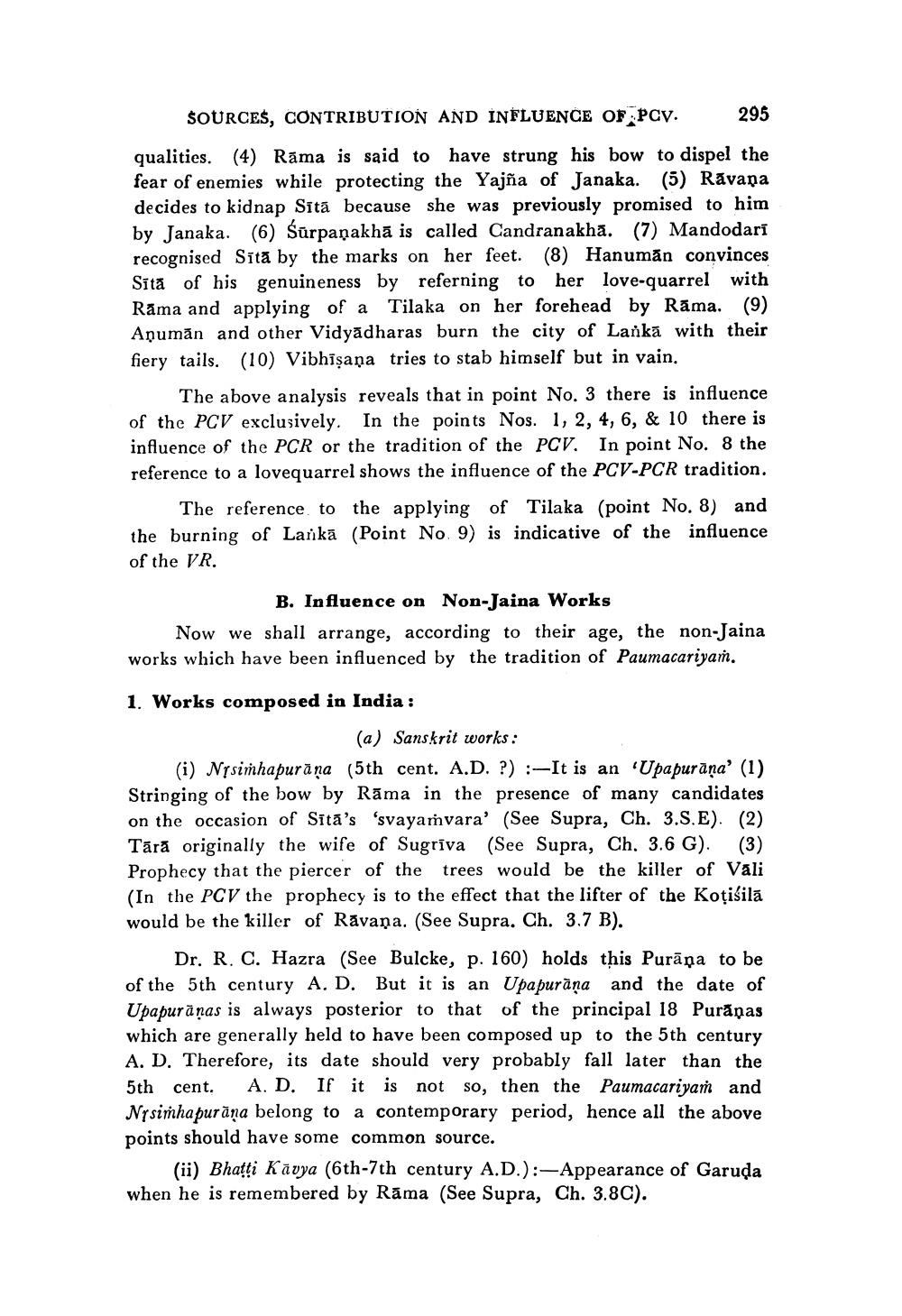________________
SOURCES, CONTRIBUTION AND INFLUENCE OF PCV. 295 qualities. (4) Rāma is said to have strung his bow to dispel the fear of enemies while protecting the Yajña of Janaka. (5) Rāvana decides to kidnap Sitā because she was previously promised to him by Janaka. (6) Sūrpanakhā is called Candranakha. (7) Mandodari recognised Sita by the marks on her feet. (8) Hanuman convinces Sită of his genuineness by referning to her love-quarrel with Rama and applying of a Tilaka on her forehead by Rama. (9) Anumān and other Vidyadharas burn the city of Lanka with their fiery tails. (10) Vibhişana tries to stab himself but in vain.
The above analysis reveals that in point No. 3 there is influence of the PCV exclusively. In the points Nos. 1, 2, 4, 6, & 10 there is influence of the PCR or the tradition of the PCV. In point No. 8 the reference to a lovequarrel shows the influence of the PCV-PCR tradition.
The reference to the applying of Tilaka (point No. 8) and the burning of Larkā (Point No. 9) is indicative of the influence of the VR.
B. Influence on Non-Jaina Works Now we shall arrange, according to their age, the non-Jaina works which have been influenced by the tradition of Paumacariyan.
1. Works composed in India :
(a) Sanskrit works : (i) Ny simhapurāņa (5th cent. A.D. ?) :- It is an 'Upapurāņa' (1) Stringing of the bow by Rāma in the presence of many candidates on the occasion of Sita’s ‘svayamvara' (See Supra, Ch. 3.S.E). (2) Tără originally the wife of Sugrīva (See Supra, Ch. 3.6 G). (3) Prophecy that the piercer of the trees would be the killer of Vali (In the PCV the prophecy is to the effect that the lifter of the Kotisila would be the killer of Rāvana. (See Supra. Ch. 3.7 B).
Dr. R. C. Hazra (See Bulcke, p. 160) holds this Purāna to be of the 5th century A. D. But it is an Upapurāna and the date of Upapurāņas is always posterior to that of the principal 18 Purăņas which are generally held to have been composed up to the 5th century A. D. Therefore, its date should very probably fall later than the 5th cent. A. D. If it is not so, then the Paumacariyam and Nysimhapurāna belong to a contemporary period, hence all the above points should have some common source.
(ii) Bhatti Kävya (6th-7th century A.D.):- Appearance of Garuda when he is remembered by Rāma (See Supra, Ch. 3.8C).




